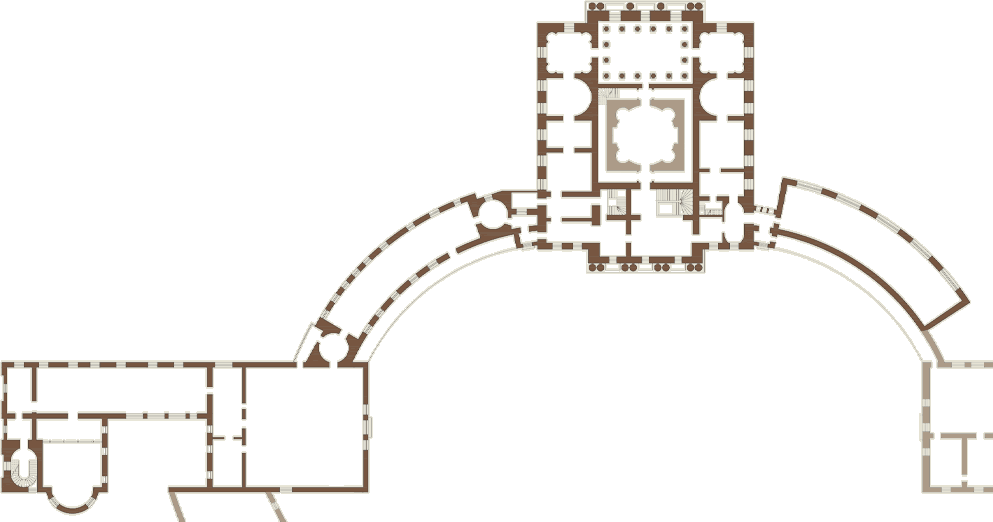The Upper Vestibule
Загрузка панорамы...
In the 18th century, this vestibule was called the Upper Seni. Under Emperor Paul I, it served as the place of changing of the palace guard. The architectural volume of the staircase and the vestibule was determined by Charles Cameron in 1784–1788, and Vincenzo Brenna decorated the vestibule in 1793–1794. Using various decorative techniques, Brenna brought the air of special solemnity to the vestibule located in the center of the Palace, on its main axis. The staircase room and the Upper Vestibule are linked through a gentle arch supported by half-figures of telamons (sculptor Ivan Prokofiev?). Brenna designed the vestibule to be a two-light hall: the daylight pouring through the glazed doors of the balconies is reflected from the mirrored windows and doors located opposite them. The smoothly painted walls are decorated with spectacular stucco compositions in the technique of high relief depicting military trophies. Three panels along the staircase remind of the victories of the Russian army in the Russo-Turkish wars: Turkish turbans and tugs (symbols of the power of the Turkish commanders), and Russian battle banners. On the central wall, against the background of banners, is the armament of an ancient Roman warrior; the hood molds above the doors have knight's armor in them. In the corners of the vestibule (on the sides of the arch), there are stucco ornamented stoves, each having an oval shield with the image of the head of the Gorgon Medusa in the center. At the corners of the balcony doors, there are monumental carved floor lamps; in the central medallion, there is a double-headed eagle, a symbol of Imperial power.
The motifs of military trophies are also introduced into the painting of the plafonds that make up a single ensemble with decoration. The architectural and perspective painting of the vestibule plafond represents a vaulted arcade, in the center of which is the state emblem of the Russian Empire. The painting was made by the decorator Giovanni Battista Scotti per the project of Vincenzo Brenna. Here is what Brenna wrote about it: “The staircase, as it turned out, is the jewel of the vestibule, the upper part of which ends with an architectural composition of magnificent doors decorated with armor and two plafonds I painted”. In the center of the lobby, there is a bronze sculpture Hercules on a Horse by Mikhail Kozlovsky (1799).
Despite the significant losses of decor during World War II, the figures of telamons, stucco compositions on the walls of the vestibule and stairs, and plaster stoves have been preserved in their authenticity and subsequently restored. The picturesque figure of Glory on the left above the arch has also been mostly preserved in its original shape and form.
The Upper Vestibule on the floor plane
- The Egyptian Vestibule
- The Carpet Study
- The Second Interconnecting Study
- The Main Staircase
- The Hall of War
- The Picture Gallery
- The Upper Vestibule
- The Greek Hall
- The Third Interconnecting Study
- The Italian Hall
- The Hall of Peace
- The Throne Room
- The Valet de Chambre Room of Paul I
- The Library of Empress Maria Feodorovna
- The Pantry
- The Dressing Room of Paul I
- The Boudoir
- The Orchestral Room
- The Rossi Study
- The State Bedroom
- The Knights Room
- The Rossi Library
- The Dressing Room of Maria Feodorovna
- The Chevalier Guard Room
- The Small Study of Emperor Paul I
- The Maid of Honour's Room
- The Anteroom (Turkish Room)
- The State Library of Paul I
- The First Interconnecting Study
- The Palace Church

Back
